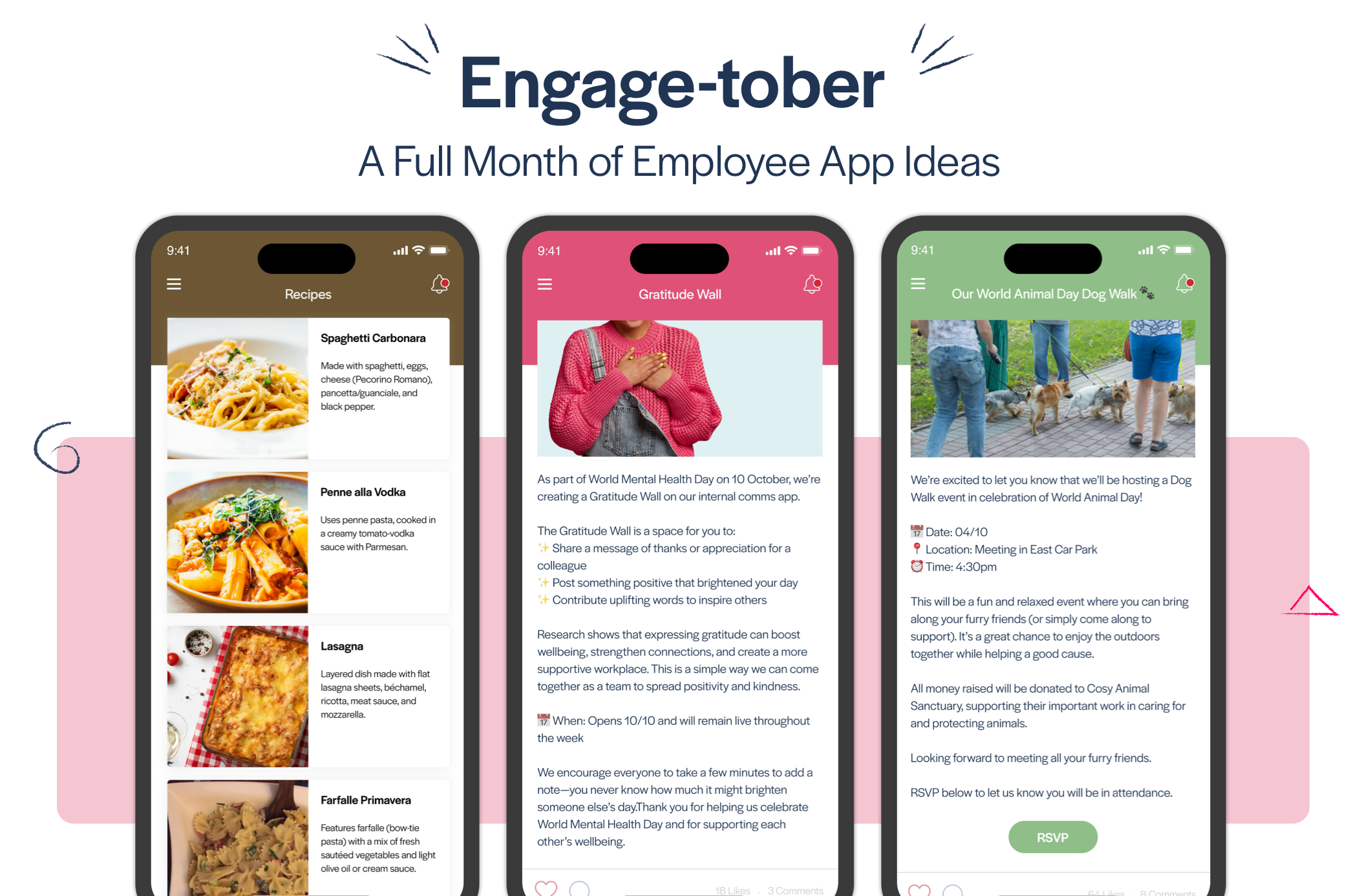
Blog
Boost Retail Employee Engagement and Communication: A Quick Guide
Four key ways to lift employee engagement, and how doing so can help control your organisational challenges.

The Retail Industry employs over three million workers in the UK, greatly contributing to the economy. A key challenge in the Retail Sector is positively engaging their employees. How can we tackle systemic staff dis-engagement in the Retail Sector?
With over 300,000 retail outlets in the Retail Industry, come the three million individuals responsible for making the retail sector tick.
The retail sector is a huge part of our everyday life. However, with Covid-19 restrictions and multiple lock downs, retail has suffered. With shocking news of industry giants Topshop and Debenhams on the verges of collapse, we find ourselves asking what role of employee communications can play in navigating through challenging times.
According to Gallup State of the Global Workplace report, 85% of employees are not engaged, or are actively disengaged at work. Compare this to research by Harvard Business Review which shows 71% of managers perceive employee engagement as a critical to their company’s success.
Have you been effective at engaging the individuals who work for your retail outlet? Or have you struggled to figure out how to ensure employee engagement efforts add value to your business?
In the retail industry, you are likely to have your choice of challenges, including a tight labour market, heavy competition, and a high turnover of staff. We’ll show you four key ways that you can lift employee engagement, and how doing so can help control your organisational challenges.
#1 Increased Employee Feedback
Feedback is a deal-breaker for many employees, so much so that when they do not get it, they are likely to search for employment elsewhere. Feedback – or its lack – can also impact employee performance. According to HubSpot, 69% of employees say they would work harder if they felt their efforts were being acknowledged. Managers must provide and ask for constructive feedback more frequently and in a way that is more personalised – showing their investment in their employees. Employees today want to know their individual contributions are noticed, recognised, and appreciated. Look for opportunities to integrate peer-to-peer feedback and to communicate recognition on a daily basis.
#2 Training and Development
Training is vital for any organisation – for both the employer and employee. It presents an opportunity to expand the knowledge and skills of all employees, however employers can find development opportunities expensive – with employees attending training sessions missing out on time at work. However, the return on training and development of employees is greater than this.
It can be difficult to administer training during this time of social distancing, however technology can be a great way to overcome this. Whether it is employees on the shop floor, management teams or customer service representative (among many other contributors), training is one thing that can empower and motivate your staff.
#3 Two-Way Communication
It can be isolating not knowing what is going on in your company, especially during these times of uncertainty. With rules and restrictions constantly changing, more retailers seem to be investing in technologies that improve efficiency throughout automated processes, better the employee experience and improve employee communication.
Important company information and communication will your fingertips. Your employee app can be your central hub which where you find useful information and important updates from the company. For example, health and safety information and policies, training, advice for Furloughed employees, company end of week or month roundups, new job listings, latest updates on Covid-19 and much more. It is important for retail employees to be able to access information 24/7 on a real-time basis - particularly as different departments work on different shift basis’.
#4 Company Culture & Team Building
At its heart, culture is often described as a shared set of values that encourages community. Engaged employees recognise culture manifesting itself in the form of trusted leadership, supportive management and creating a positive work environment. Employee communication that engages employees from the perspective of culture should focus not just on publicising these values, but also on encouraging feedback and recognising value-centric actions and behaviours.
Some examples of how an Employee App can help develop your company culture:
- · Posting and updating company news.
- · Sharing video updates or messages of encouragement from senior leaders.
- · Running charity events.
- · Organising internal events such as training, town halls, seminars, well-being sessions.

An Employee App will provide you with the tools to deliver training online so that social distancing can be carried out. Your app can act as a communication pathway between employees within your organisation and can introduce an internal social network within your company.
Would you like to find out how an Employee App can boost your organisation, and help motivate, engage and resonate with your employees? Discover how simple it is to get started and how quickly you can get a powerful communications tool in the hands of your employees. Let’s have a conversation today.









